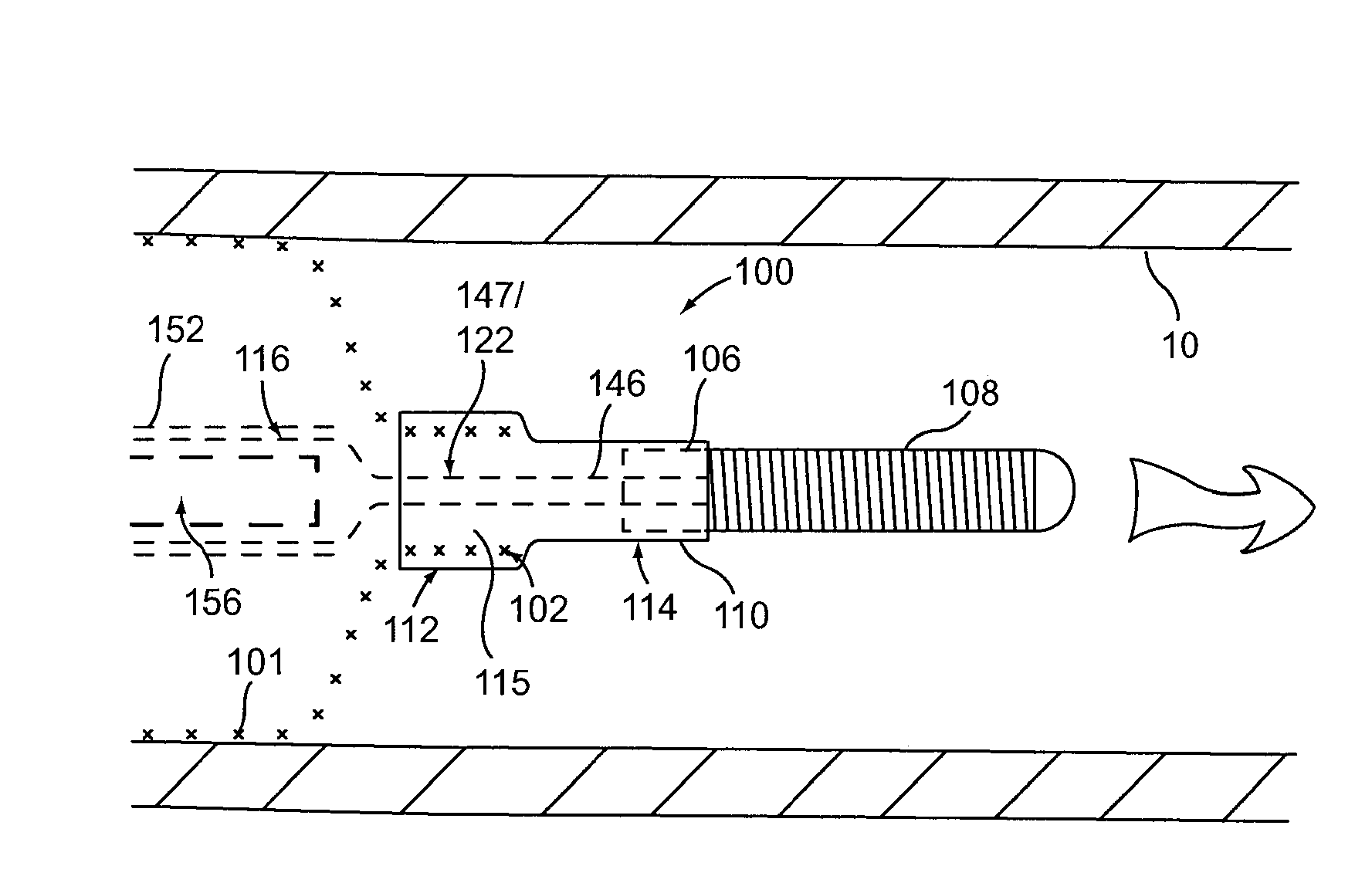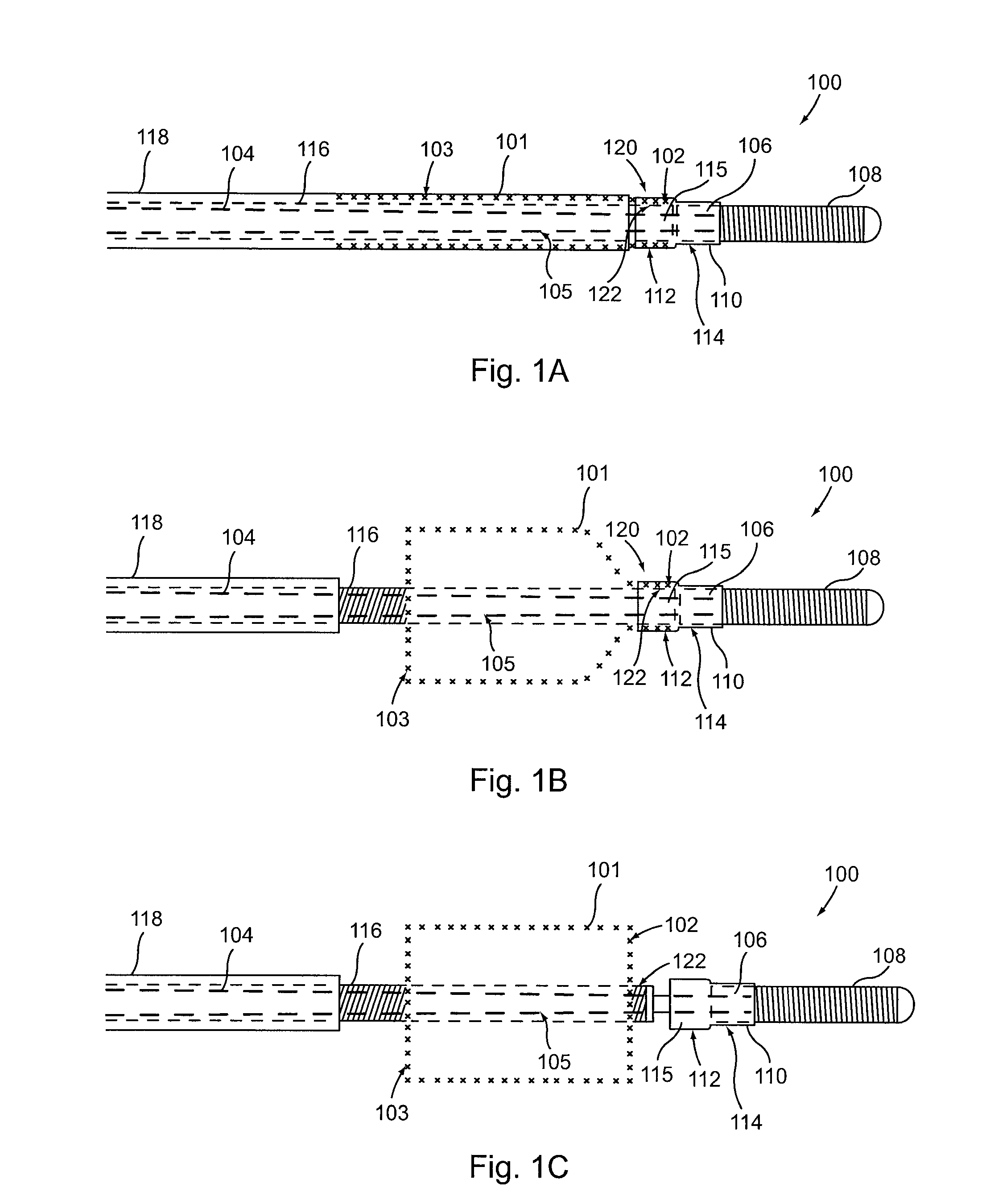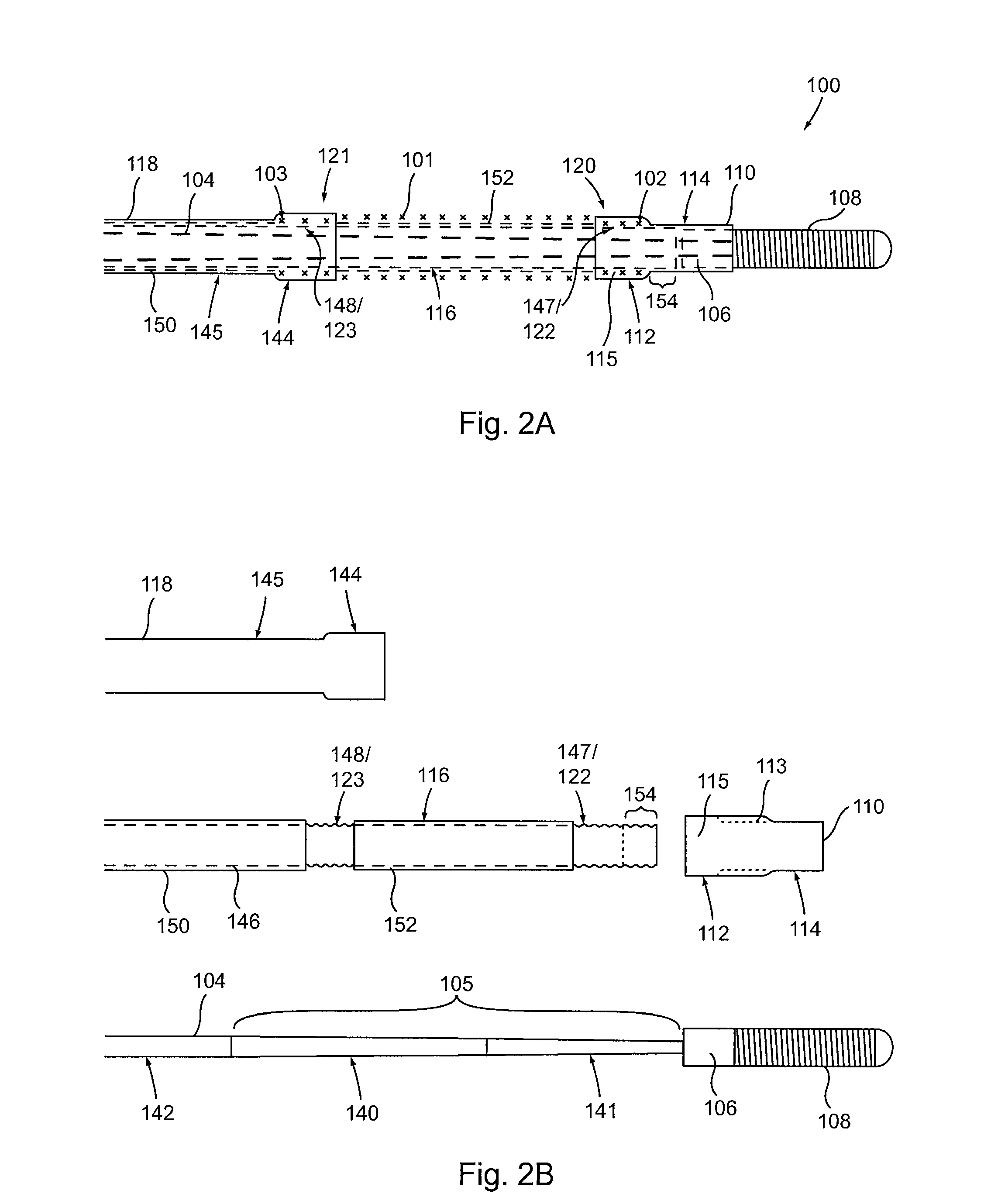Friction-Release Distal Latch Implant Delivery System and Components
a technology of distal latch and delivery system, which is applied in the field of distal latch implant delivery system and components, can solve the problems of inadvertent deployment and/or non-optimal control, limited system miniaturization of referenced system(s), and inability to meet the needs of patients, etc., and achieve the effect of lengthwise shortening of the implan
- Summary
- Abstract
- Description
- Claims
- Application Information
AI Technical Summary
Benefits of technology
Problems solved by technology
Method used
Image
Examples
Embodiment Construction
[0032]Provided herein are systems, devices and methods for the delivery of a preferably expandable implant using one or more devices for releasably holding the implant in a state of frictional lock.
[0033]Turning to FIG. 1A, a tubular implant 101 is held in a contracted state in the implant delivery system 100. System 100 includes an elongate tubular proximal member (or outer sheath) 118. An elongate core member 104 and an elongate textured member 116 are both located within the lumen of outer sheath 118. Elongate textured member (or sleeve) 116 is configured as a tubular sleeve with the elongate core member 104, which is preferably a wire or wire-like member, slidable within the lumen of sleeve 116. Core member 104 is coupled to a hub 106 at its distal end, as well as an atraumatic tip 108, depicted here as a coiled floppy tip. Alternatively, the coil tip 108 may be omitted and core member 104 can instead be tubular (e.g., comprising hypo-tube) to allow for over-the-wire system use....
PUM
 Login to View More
Login to View More Abstract
Description
Claims
Application Information
 Login to View More
Login to View More - R&D
- Intellectual Property
- Life Sciences
- Materials
- Tech Scout
- Unparalleled Data Quality
- Higher Quality Content
- 60% Fewer Hallucinations
Browse by: Latest US Patents, China's latest patents, Technical Efficacy Thesaurus, Application Domain, Technology Topic, Popular Technical Reports.
© 2025 PatSnap. All rights reserved.Legal|Privacy policy|Modern Slavery Act Transparency Statement|Sitemap|About US| Contact US: help@patsnap.com



